A calculator made of roller coasters, devised by Marcel Vos using Rollercoaster Tycoon 2.
He explains it in this Imgur album.
A calculator made of roller coasters, devised by Marcel Vos using Rollercoaster Tycoon 2.
He explains it in this Imgur album.
In 1858 British railways found a unique way to save time: Rather than stopping at an intermediate station, an express train would simply uncouple a car full of passengers, which would roll into the station under its own momentum, slowed by a guard using brakes. At the station the passengers could disembark, or their coach might be connected to a train that served a branch line. Eventually a local train would deliver the coach to a station where it might be connected again to the express.
This practice continued until 1960 — the last “slip” is documented above.
(Via MetaFilter.)
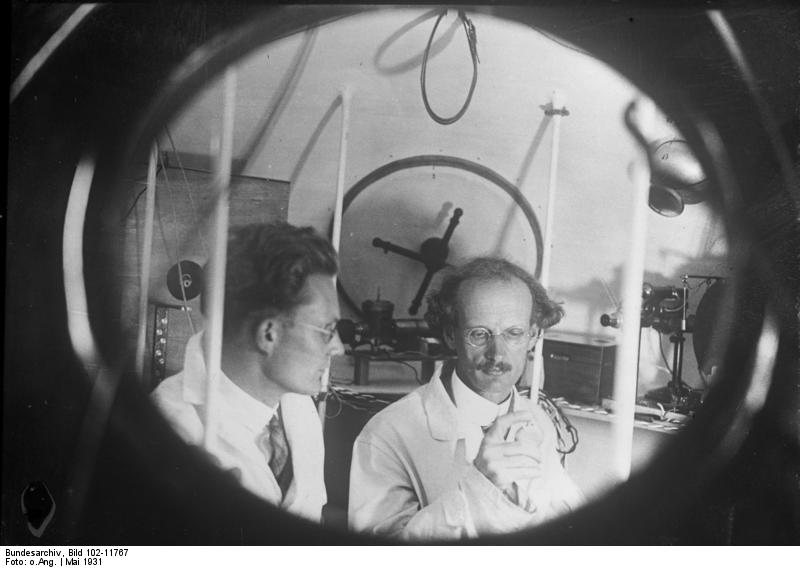
Swiss physicist Auguste Piccard opened two new worlds in the 20th century. He was the first person to fly 10 miles above the earth and the first to travel 2 miles beneath the sea, using inventions that opened the doors to these new frontiers. In this week’s episode of the Futility Closet podcast we’ll follow Piccard on his historic journeys into the sky and the sea.
We’ll also admire some beekeeping serendipity and puzzle over a sudden need for locksmiths.
In the early days of silent movies, large theaters would engage orchestras to play the accompanying music. But starting around 1910, small venues that lacked the money or the space could use a machine instead. In Film Music, music editor Roy M. Pendergast writes, “In addition to music, these machines were capable of providing a battery of sound effects, and they ranged in size from what was essentially a player piano with small percussion setup to elaborate instruments nearly equaling a twenty-piece pit orchestra.” He quotes Samuel A. Peeples in Films in Review:
The crowning achievement of the American Photo Player Company was their Fotoplayer Style 50, only one of which is presently known to survive in operating condition. Among the most splendid automatic musical instruments ever built, it was 21 feet long, 5 feet wide, and 5 feet 2 inches tall. It was capable of recreating the volume of a 20-piece pit orchestra, plus a full-scale theatre pipe-organ, with an incredible range of effects, such as the lowing of cattle, the drumming of hoofs in assorted gaits, several varieties of klaxons, street traffic noises, crackling flames, breaking wood and brush, rifle, pistol and machine gun shots, even the sound of a French 75MM cannon!
Pendergast adds, “One wonders about the quality of genius it must have taken to operate one of these devices.”
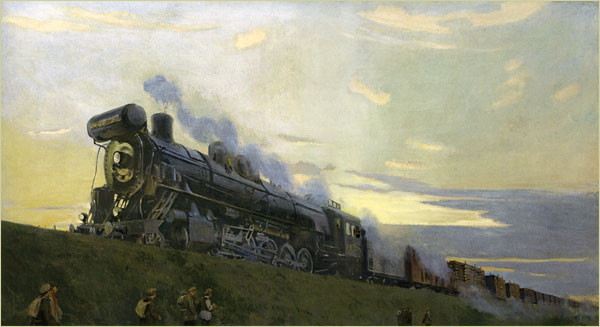
Panegyric to a train, from the Hurutshe people of South Africa:
Iron thing coming from Pompi, from the round-house
Where Englishmen smashed their hands on it,
It has no front it has no back.
Rhino Tshukudu going that way.
Rhino Tshukudu no, coming this way.
I’m no greenhorn, I’m a strong, skillful man.
Animal coming from Pompi, from Moretele.
It comes spinning out a spider’s web under a cloud of gnats
Moved by the pulling of a teat, animal coming from Kgobola-diatla
Comes out of the big hole in the mountain, mother of the great woman,
Coming on iron cords.
I met this woman of the tracks curving her way along the river bank and over the river.
I thought I’d snatch her
So I said
“Out of the way, son of Mokwatsi, who stands there at the teat.”
The stream of little red and white birds gathered up all of its track
Clean as a whistle.
Tshutshu over the dry plains
Rhino Tshukudu out of the high country
Animal from the south, steaming along
It comes from Pompi, the round-house, from Kgobola-diatla.
(Jerome Rothenberg, Technicians of the Sacred, 1968; Ruth Finnegan, Oral Literature in Africa, 2012.)
In February 1985, British birder David Hunt led a tour around India. One of the stops was Jim Corbett National Park, in Uttar Pradesh, which has a large tiger population. The park provides an armed guard to each group of visitors, and they’re required to stay on the trails. As his party explored the park, though, Hunt heard an unknown call and walked a short distance off the track. Minutes later there was a scream. When his friends rushed to help, they discovered his mauled body in a clearing nearby. His friend Bill Oddie wrote:
When David’s body was recovered, so was his camera. Later on, the slides were developed … The first one is a nice close-up of a Spotted Owlet sitting on a branch … Then he must have heard a noise behind him, or maybe just sensed that he was not alone. Keeping crouched, he turned and saw a tiger pacing to and fro at the edge of the clearing. The next slide is of the tiger. It is some way away, walking to the right. On the next picture it is walking to the left. In the next one, it is facing the camera. In the next, it has begun to move forward, still looking straight at the lens. The next is closer. Then closer. And closer still. The final picture is of a frame-filling shot of the tiger’s head, eyes blazing and teeth exposed in a snarl.
“If David had kept shooting on his motor-drive, the whole thing must have happened in barely ten seconds,” Oddie added. “Crouched behind a camera, looking through the viewfinder and especially when using a telephoto lens, you don’t realise how close your subject has got. Neither, at the time, do you care. All you are focusing on is the picture. Press cameramen in war situations call it ‘camera blindness.’ It has proved fatal before.”
(From Oddie’s Follow That Bird!, quoted in Stephen Moss’ A Bird in the Bush, 2004.)
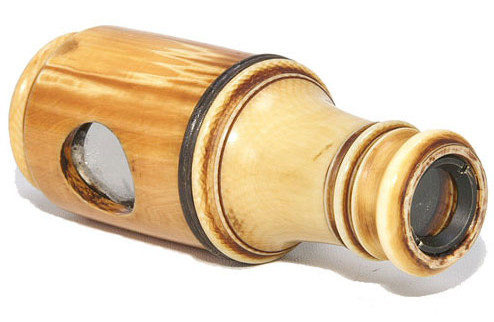
This is sneaky: Operagoers in the 18th century could spy on their neighbors using a “jealousy glass” — you’d appear to be watching the stage but a mirror would direct your view to the side, like a horizontal periscope. Marc Thomin, optician to the queen of France, wrote in 1749:
It is sufficient to turn this opening in the direction of whatever one wishes to observe and the curiosity is immediately satisfied. Its usefulness is confined to letting us see surreptitiously a person we seem not to be observing. This lorgnette may have been called a decorum glass because there is nothing more rude than to use an ordinary opera glass for looking at some one face to face.
Hanneke Grootenboer writes in Treasuring the Gaze, “Apparently, it was very convenient in allowing one to keep track of latecomers entering the opera without having to turn one’s head.”
(From J. William Rosenthal, From Spectacles and Other Vision Aids: A History and Guide to Collecting, 1996.)
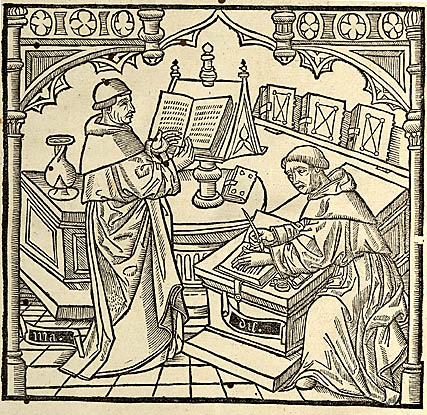
Notes left in manuscripts and colophons by medieval scribes and copyists, from the Spring 2012 issue of Lapham’s Quarterly:
New parchment, bad ink; I say nothing more.
I am very cold.
That’s a hard page and a weary work to read it.
Let the reader’s voice honor the writer’s pen.
This page has not been written very slowly.
The parchment is hairy.
The ink is thin.
Thank God, it will soon be dark.
Oh, my hand.
Now I’ve written the whole thing; for Christ’s sake give me a drink.
Writing is excessive drudgery. It crooks your back, it dims your sight, it twists your stomach and your sides.
St. Patrick of Armagh, deliver me from writing.
While I wrote I froze, and what I could not write by the beams of the sun I finished by candlelight.
As the harbor is welcome to the sailor, so is the last line to the scribe.
This is sad! O little book! A day will come in truth when someone over your page will say, “The hand that wrote it is no more.”
In her History and Uncertain Future of Handwriting, Anne Trubek lists another: “Here ends the second part of the title work of Brother Thomas Aquinas of the Dominican Order; very long, very verbose, and very tedious for the scribe.”
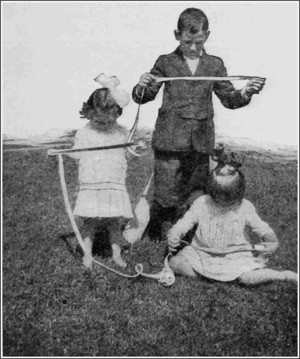
Your friends are always asking for long letters. To supply this demand a man in Los Angeles, California, has invented a little novelty that has captured the fancy of visiting tourists.
It consists of a roll of paper tape sixty feet long. The paper is made to write on, and has a place for the name and address of the sender and receiver. It goes as first class mail for two cents, like any other letter, and can be mailed in any mail box.
These little ‘long letters’ cause many a laugh and one can write a regular letter on the tape, by merely unrolling it as it is used up.
— Popular Science Monthly, February 1916
Woodworking engineer Matthias Wandel built a 6-bit wooden adding machine driven by marbles.
More info (and more gizmos) at his website.